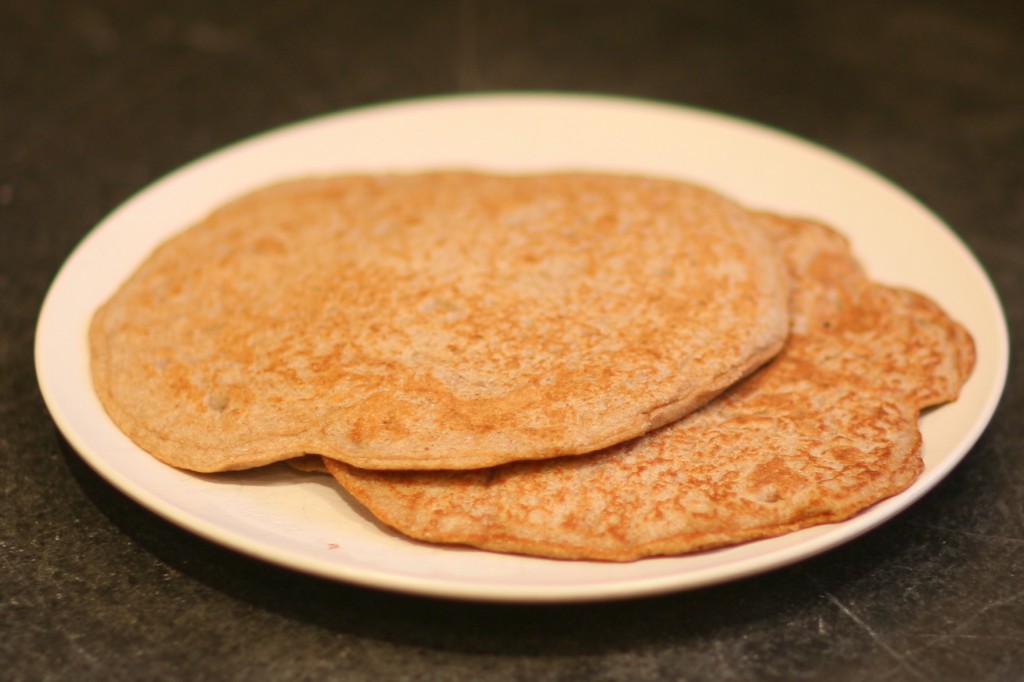I’m wrapping up whole grains month with a recipe for Injera, a yeasted, fermented, Ethiopian flat bread made with teff flour. Injera is a plate, utensil and food all rolled up into one; everything from stews to salads are put onto and eaten with the Injera which allows it to soak up all of the flavors of the meal.
This recipe came to me from the Vegetarian Times website, and is interesting because the batter sits overnight rather than for several days (as is typical) but still develops tangy flavor. Since I can never leave well enough alone I did alter it somewhat; instead of adding cumin and fenugreek I kept it plain with just the salt, and instead of a gluten free flour mix I used whole wheat flour. The other thing that I did was to grind my own teff flour. I had read somewhere that it wasn’t possible because the teff grains are so tiny, but I tried it anyway and it worked!
The batter mixed up into a loose consistency like a sponge made for a yeasted bread; I covered it with plastic wrap and then put it aside on the kitchen counter. In the morning I simply mixed in a little honey and poured the batter onto a hot pan. I kept thinking of these as pancakes, which as you can see from the photo below is an easy mistake. They certainly could be eaten in the same way, but they are much more substantial and there are many more uses to this flatbread than just that.

The flavor of this flatbread is tangy and yeasty – in a good way. For those who are wheat and or gluten free and miss the flavor of a yeasty bread, Injera is for you! Just follow the recipe as written and use a gluten free flour mix along with the teff flour. Because of this yeasty, bread-y flavor, I think they are well suited to be paired with savory options (like stews as is traditional) or used to make a sandwich. I could picture this with caramelized onion mixed into the batter for an amazing savory dish topped with sour cream or used as a wrap.
Since the recipe made several, I simply wrapped the extras and popped them into the fridge; I was able to try them in numerous ways over the course of a few days and they reheated well in the toaster oven or were great cold too. The ways I used up my flatbread were:
- Wrapped around a banana and some peanut butter for a post workout snack.
- With pizza sauce and cheese in the toaster oven for a pizza.
- With a couple of chocolate chips in the toaster (just until melted) then spread around along with a scoop of peanut butter.
- As a wrap with some turkey, cheese and lots of greens.
One last thing about teff that helps to make it an even better nutrient powerhouse, is that it’s also a great source of Iron. Increasing Iron intake for those who are deficient can be very difficult because supplements can cause GI problems for some people. Having more easy food options for optimizing Iron intake is priceless. Per serving teff contains 160 calories, 6g fiber, 5g protein and 20% of the Daily Value of Iron; not too bad for a tiny seed!



